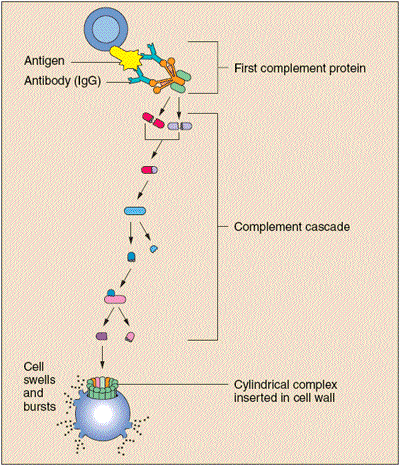adapted from http://www.niaid.nih.gov/topics/immunesystem/immunecells/Pages/complementSystem.aspx
accessed 24/12/2013 at 12.24 PM
The complement system is made up of about 25 proteins that work together to assist, or “complement,” the action of antibodies in destroying bacteria. Complement also helps to rid the body of antibody-coated antigens (antigen-antibody complexes). Complement proteins, which cause blood vessels to become dilated and then leaky, contribute to the redness, warmth, swelling, pain, and loss of function that characterise an inflammatory response.
Complement proteins circulate in the blood in an inactive form. When the first protein in the complement series is activated—typically by antibody that has locked onto an antigen—it sets in motion a domino effect. Each component takes its turn in a precise chain of steps known as the complement cascade. The end products are molecular cylinders that are inserted into—and that puncture holes in—the cell walls that surround the invading bacteria. With fluids and molecules flowing in and out, the bacterial cells swell, burst, and die. Other components of the complement system make bacteria more susceptible to phagocytosis or attract other immune cells to the area.
